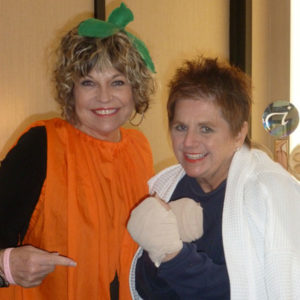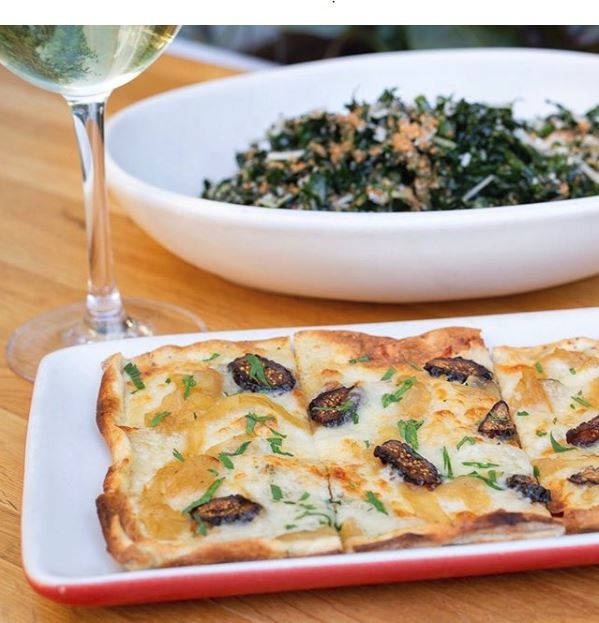 In August 2014, my patient, “Debbie” discovered an ominous large, left breast mass, while showering. She was visiting her sister, “Dora”, also a breast cancer survivor, who was recovering from an Orthopedic procedure. The sisters were devoted best friends who sang acapella. Drawing on her own personal experience, Dora rallied her health network around her sister who eventually consulted with me for reconstructive options. Her cancer diagnosis was particularly challenging because of the size, location and pathologic type as well as her body habitus and social circumstances. Estranged from her husband in Texas, Debbie started her journey here in Newport Beach, flanked by her adoring children. She asked insightful questions, which reflected her independent research and accepted answers, which were not those anticipated, especially when she was deemed unsuitable for autogenous reconstruction, the use of a patient’s own excess abdominal wall skin, fat & muscle to create a breast mound. Dora was her sister’s super advocate, expressing concerns, where she felt more information was necessary and setting the expectation that we would be spending a lot of time together rebuilding her breasts and life.
In August 2014, my patient, “Debbie” discovered an ominous large, left breast mass, while showering. She was visiting her sister, “Dora”, also a breast cancer survivor, who was recovering from an Orthopedic procedure. The sisters were devoted best friends who sang acapella. Drawing on her own personal experience, Dora rallied her health network around her sister who eventually consulted with me for reconstructive options. Her cancer diagnosis was particularly challenging because of the size, location and pathologic type as well as her body habitus and social circumstances. Estranged from her husband in Texas, Debbie started her journey here in Newport Beach, flanked by her adoring children. She asked insightful questions, which reflected her independent research and accepted answers, which were not those anticipated, especially when she was deemed unsuitable for autogenous reconstruction, the use of a patient’s own excess abdominal wall skin, fat & muscle to create a breast mound. Dora was her sister’s super advocate, expressing concerns, where she felt more information was necessary and setting the expectation that we would be spending a lot of time together rebuilding her breasts and life.
A week later, in the preop holding area, the sisters asked if I would join them in singing the “Lord’s prayer”; I complied and marveled at their harmony. Bilateral breast reconstruction with tissue expanders and Alloderm “slings” was done in tandem with the General Surgeon. Debbie’s recovery was dogged by mastectomy flap dehiscence, seroma and infection. Throughout this rocky course, Debbie was an ideal patient of courage She and her sister surprised us with an impromptu Halloween costume parade, in which she portrayed “Rocky Balboa”, the underdog fighter. Her humor, graciousness and optimism were definitely inspirational on her weekly visits
Two months after the mastectomy, she asked me to look at a “rash”, which had appeared on her left lateral chest. Rallying my clinical skills, I diagnosed “shingles”, a reactivation of the Varicella virus, which occurs in individuals > 60 and under particularly stressful circumstances. After protracted questioning both sisters volunteered a history of hypogammaglobulinemia (low production of antibodies), which inhibits wound healing and was the explanation for Debbie’s difficult post¬op course. I was able to refer her to an Infectious Disease consultant who facilitated the infusions of gamma globulin necessary for wound healing.
Breast cancer treatment can consist of a combination of surgical, chemotherapy (IV infusions and hormone blockers) and radiation modalities, all dependent on the pathological characteristics of the tumor. Each phase must be complete before the patient can transition to the next. Debbie’s protracted wound healing delayed the initiation of chemo almost 4 months. However barely 2 weeks into the prescribed course of chemotherapy, she was hospitalized because of fever, low white count and colitis. Despite the addition of gamma globulin infusions, the systemic effects of chemotherapy had laid her low. She called frequently to chat and I requested that she return to discuss reconstructive options, when she felt better.
Five months of fighting had left Debbie exhausted and frail but her desire to live was strong. She had a unique way of making her treating physicians feel special, even when the news wasn’t good. I must admit I was looking forward to her visit in January but the spectre of the fleshy mass in the mastectomy scar was devastating. I briefed her on the need to determine the nature of this lesion and scheduled her for biopsy. I think we both knew what this represented even before the Pathologist’s diagnosis, metastatic breast cancer.
Debbie’s tumor was a particularly aggressive type, as determined by its size, at initial diagnosis, growth patterns and invasiveness. She struggled valiantly, unquestioningly accepting painful procedures, disappointments and remaining sweet and generous through all. No quarter was to be granted, as the tumor spread to both lungs and a hip. A short 10 months after diagnosis, surrounded by her children and sister, Debbie passed.
On this Breast Reconstruction Awareness Day 2015, I reflect on how my breast reconstruction patients have inspired me to become a better surgeon. The role of the Plastic Surgeon in a breast reconstruction team is to restore a modicum of control and hope. Breast reconstruction usually requires multiple stages, each less intense and often conducted as outpatient procedures. The conventional wisdom is it takes at least a year to rebuild a breast.
-Stage I: Preservation of the mastectomy flap at the time of mastectomy is usually accomplished by placement of temporary saline post¬operatively adjustable devices called tissue expanders. Operative time 4 hours. These so¬ called “space savers” provide options, which can be activated according to the needs of the tumor’s Pathology. Thus for clear surgical margins and a relatively “benign” tumor, tissue expansion can be complete in 2¬3 months. Alternatively, if chemotherapy and/or radiation therapy is considered vital, tissue expansion can be delayed and resumed when the patient has recovered sufficiently; 4¬6 months.
-Stage II: Refinement of the breast mound by replacement of the tissue expander for silicone gel implants is usually scheduled as an outpatient procedure; 2 hours.
-Stage III: Nipple flap creation +/¬ fat grafting, 1.5 hours, outpatient procedure is delayed at least 2¬3 months, to allow settling of the implants.
-Stage IV: Areolar micropigmentation, outpatient procedure may require touch¬ups, as tattoo pigments often fade.



